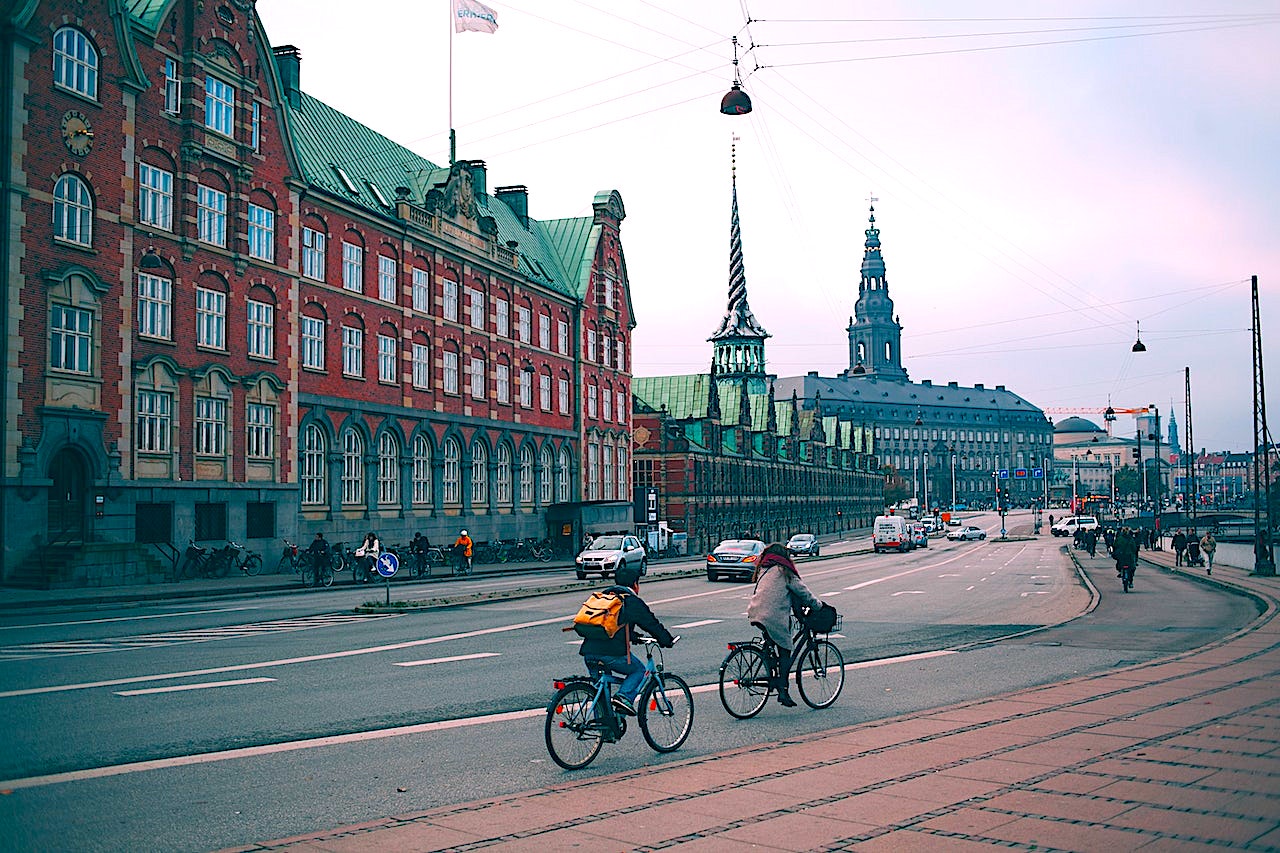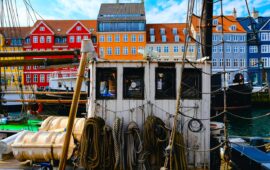Walk around Copenhagen
When most people think of Copenhagen, the first thing that comes to mind is the stunning architecture of the Old Town, the beautiful parks and the bustling waterfront. However, there is much more to this city than meets the eye. A hidden gem that is often overlooked by tourists is Christiania, a unique neighborhood in the heart of Copenhagen.
Christiania, also known as Freetown Christiania, is a self-proclaimed autonomous neighborhood founded in 1971. It was created by a group of squatters who took over an abandoned military base in the center of the city and created their own community, free from the rules and regulations of mainstream society.
Today, Christiania is home to around 1,000 people who live in a tight-knit community that values sustainability, creativity and freedom. The neighborhood is known for its vibrant street art, eco-friendly lifestyle and relaxed atmosphere. Visitors who take a tour of Christiania can expect to see a side of Stockholm far removed from the polished image of the city’s royal palaces and high-end boutiques.
One of the best ways to explore Christiania is to take a free walking tour of the neighborhood. These tours are led by knowledgeable local guides who provide insight into the history, culture and social dynamics of the community. Visitors can learn about Christiania’s origins, its struggles with the authorities, and its current status as a haven for artists and activists.
During the tour, visitors can also see some of Christiania’s most famous landmarks, such as Pusher Street, a narrow alley lined with stalls selling cannabis, and the Green Light District, an area where visitors can legally purchase and consume marijuana. These areas are controversial and often the subject of police raids, but they are also an important part of Christiania’s culture and identity.
In addition to the drug culture, Christiania is also home to a number of art galleries, workshops and community spaces. Visitors can explore the many street art murals that decorate the walls of the neighborhood, or attend a concert or theater performance at one of the local venues.
One of the most interesting aspects of Christiania is its commitment to sustainability and eco-friendliness. The neighborhood has its own sewage treatment plant, solar panels and wind turbines, and residents are encouraged to use bicycles and other environmentally friendly means of transportation. Visitors interested in sustainable living can learn a lot from Christiania’s example.
Despite its unorthodox approach to urban living, Christiania has managed to survive and thrive for over four decades. The neighborhood has faced many challenges over the years, including legal battles with the authorities and internal conflicts over how to manage its resources. However, the community has remained resilient, and its spirit of independence and creativity continues to inspire visitors from around the world.
If you are planning a visit to Copenhagen, be sure to include a tour of Christiania in your itinerary. The neighborhood offers a fascinating glimpse into a different way of life, one rooted in community, creativity and freedom. Whether you are interested in street art, sustainability or alternative lifestyles, Christiania is sure to leave a lasting impression.
And while you are in Copenhagen, make sure to visit the Royal Palace of Copenhagen, home to the Danish royal family for over 200 years. Located in the heart of the city, the palace is open to the public for tours and features stunning interiors, beautiful gardens and a rich history that spans centuries. A visit to the Royal Palace of Copenhagen is a great way to experience the elegance and grandeur of Danish royalty and to learn more about the history and culture of this fascinating country.
Christiania is a self-proclaimed autonomous neighborhood in Copenhagen, Denmark, that has captured the attention of people all over the world. Founded in 1971 by a group of squatters who took over an abandoned military base, the community has since grown into a vibrant hub of alternative living, creativity, and activism. Here are five fascinating facts about Christiania that make it one of the most unique and intriguing places in Copenhagen.
- Christiania is a Self-Governing Community
One of the most remarkable things about Christiania is that it operates as a self-governing community. The neighborhood has its own set of rules and regulations that are enforced by a council of elected residents. The council is responsible for managing everything from housing and sanitation to security and conflict resolution. This decentralized approach to governance has allowed Christiania to maintain its autonomy and independence, and has made it a model for other communities around the world.
- Cannabis is Sold and Consumed Openly
Christiania is famous for its lax attitude toward cannabis, which is openly sold and consumed in certain areas of the neighborhood. Visitors can stroll down Pusher Street, a narrow alleyway lined with stalls selling various strains of marijuana, hashish, and edibles. While the sale and use of cannabis is technically illegal in Denmark, the authorities have taken a hands-off approach to Christiania’s drug culture, viewing it as a unique and complex social issue.
- Christiania is a Haven for Artists and Activists
Christiania has long been a magnet for artists, musicians, and activists who are drawn to its bohemian vibe and countercultural spirit. The neighborhood is home to a number of art galleries, music venues, and community spaces, and hosts regular cultural events and festivals. The community also has a history of political activism, particularly around issues of sustainability, human rights, and social justice.
- Christiania is Committed to Sustainability
One of Christiania’s core values is sustainability, and the community has taken a number of steps to reduce its environmental footprint. The neighborhood has its own wastewater treatment plant, solar panels, and wind turbines, and residents are encouraged to use bicycles and other environmentally-friendly modes of transportation. Christiania also has a strong ethos of recycling and upcycling, and many of its buildings and structures are made from repurposed materials.
- Christiania has Faced Controversy and Legal Challenges
Despite its many successes, Christiania has faced a number of challenges over the years, particularly around issues of legality and governance. The neighborhood has been the subject of numerous police raids, and has been embroiled in legal battles with the authorities over issues such as drug trafficking and building codes. In 2016, the Danish government attempted to sell off a large portion of the neighborhood’s land, sparking protests and demonstrations from Christiania residents and supporters. While the community has weathered these challenges, they serve as a reminder of the complex and often fragile nature of alternative communities.
In conclusion, Christiania is a truly unique and fascinating place, one that defies easy categorization or explanation. Its self-governing structure, cannabis culture, commitment to sustainability, artistic community, and history of activism make it one of the most compelling and inspiring places in Copenhagen. If you’re planning a trip to Denmark, a visit to Christiania is an absolute must-see, and will leave you with memories that will last a lifetime.






